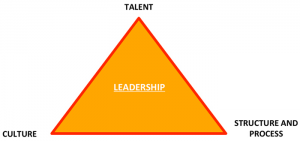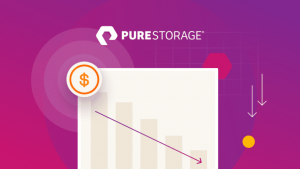Small businesses have always faced financial challenges, but today’s economic and politically-charged climate makes those challenges even more evident. Business credit is increasingly unavailable for small businesses, midsize businesses face a challenge in gaining control and transparency over their IT spending, and companies of all sizes – even large, incumbent providers – face the ongoing threat of irrelevancy. Solutions to these challenges are available, but the first step to staying alive is to acknowledge the changing climate, and realize that it’s not going to be as easy as you thought.
Small business credit? What small business credit?
Small businesses, almost by definition, don’t usually meet the underwriting requirements to obtain loans from traditional banks. Despite commonsense advice to keep your business separate from your personal life, if you’re early-stage, or just too small to be on the bank’s radar, the banks will often force your hand in this matter by requiring you to put up personal collateral or rely on your personal credit score to get business credit. As a result, many startups and even ongoing small SOHO operations rely on personal lines of credit and the owner’s personal credit cards to get things going, or to pick up the slack during the inevitable cash flow hiccups that every small business faces.
But even those personal resources may not be enough, and in the past year, the average credit limit of newly opened accounts has dropped. While the difference isn’t that significant for borrowers in the “super prime” category with FICO scores of more than 780, entrepreneurs and SOHO operators are more likely to have lower credit scores simply because of the risk path they have taken. Want a perfect credit score? Get a job at the post office, and pay your bills on time with that steady paycheck. But if you really want the thrill of entrepreneurship, your income is going to be on a roller coaster from week to week, and your FICO is probably going to take a hit. For those who have the bug, it’s worth it – but there’s going to be less money available. Even borrowers with prime credit scores of between 661 and 780 are seeing 3.2 percent lower credit availability, with “near prime” seeing 8.8 percent less, subprime 17.5 percent less, and deep subprime (300 to 499 FICO scores) seeing 25.9 percent lower credit limits.
Entrepreneurs may need to look outside of the traditional banking realm to overcome this dilemma, with newer solutions like crowdfunding, peer lending, and accounts receivable factoring to make ends meet.
Losing control of IT spending
As much as we love to blame the government, sometimes they do get things right – and a new report issued by the IT COST Commission, a vendor-neutral project created by a group of private-sector and government IT leaders, offered some insight into why the government spends so much on IT maintenance, and so little on innovation – and offers a solution to giving the public more value for their tax dollars. Businesses struggling to gain visibility into an increasingly complex IT spending environment should take notice.
It’s easy for even a small company to lose sight of what’s being spent on technology. At the governmental level, keeping track of it is a Herculean task. The Federal government – much like private firms – suffer from what’s colloquially known as “shadow IT,” a phenomenon that occurs because of the low cost and simplicity of as-a-service technology. Because it’s so easy to implement, it tends to just get deployed by line managers without input from above. The downside to that convenience is a potential for redundancy, and an inaccurate picture of how much money is really being spent on technology.
The 2014 Federal Information Technology Acquisition Reform Act (FITARA) took government agencies to task, giving agency CIOs authority over all technology spending, creating an environment in which the actual value of IT spending agency-wide can be tracked and analyzed.
The report from the IT COST Commission notes that 75 percent of the Federal IT budget is devoted to operations and maintenance, leaving less available IT-driven innovation. The Commission’s recommendations for increased visibility, a stricter methodology known as Technology Business Management, and greater transparency of IT spending is said to create an environment in which that balance could be shifted towards greater innovation.
Businesses of all sizes can take an example from this initiative, and put processes in place to use the tech budget for innovation first, and maintenance second.
You’re at risk of becoming irrelevant
Some companies are very good at selling basic, commodity goods, and they make a lot of money at it. The problem though, is that margins are very slim, and you have to do a lot of volume to be successful. This leads to the “Wal-Mart” phenomenon, in which larger competitors can often sell at retail for cheaper than what you as a small business have to pay wholesale.
Research from Loyola University’s Center for Urban Research and Learning found that a small retailer’s probability of going out of business was higher for those closer to a Wal-Mart, with the probability falling by six percent per mile in all directions from the Wal-Mart store. While there is a loss of jobs from the surrounding small retailers, that loss is about equal to Wal-Mart’s addition of employment in the same area, meaning that the large Wal-Marts are simply absorbing retail sales from other stores, rather than creating any additional employment or value.
The lesson to small businesses – especially retailers – is that selling basic, commodity items to your neighborhood is no longer enough. Added value, in terms of outstanding and personalized customer service, customized or unique goods not available at the larger stores, or being first to market is what makes small businesses win in this difficult environment.
Business & Finance Articles on Business 2 Community(16)







